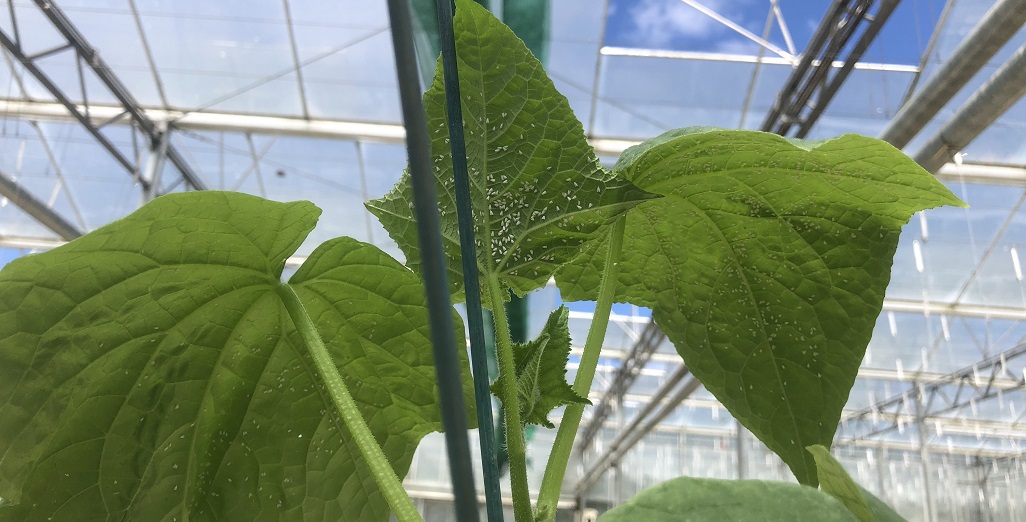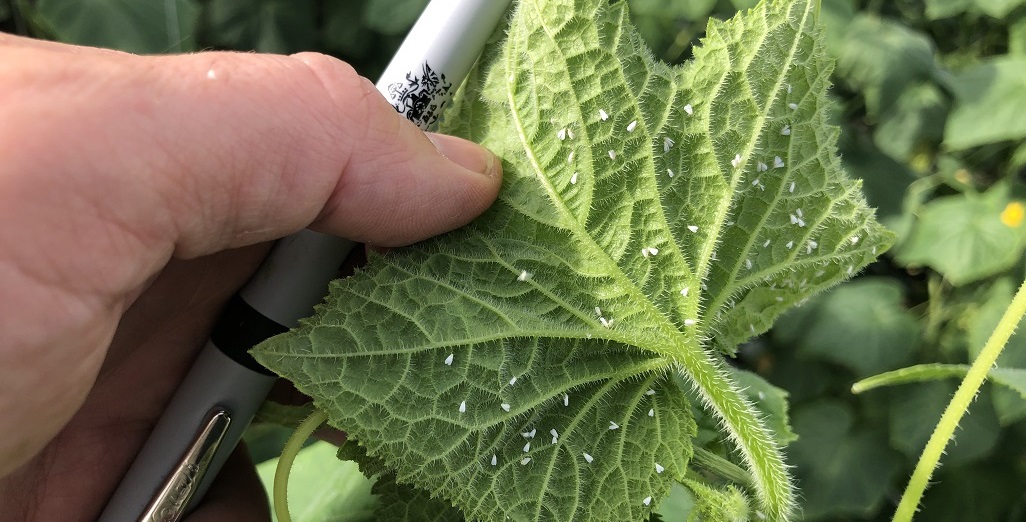Sign up here to subscribe to the Grower2grower Ezine. Every two weeks you will receive new articles, specific to the protected cropping industry, informing you of industry news and events straight to your inbox.
May 2018
Hunt for Macrolophus not Successful. Tamarixia results show promise

Hunt for Macrolophus not Successful. Tamarixia results show promise
Tomato Industry Research Update
On Tuesday 15th of May 2018, TomatoesNZ (TNZ) welcomed tomato growers, and horticulture advisers to an industry research update on the outskirts of Pukekohe.
One of the topics covered was Pest Control Research. TNZ are at the forefront of tackling issues affecting greenhouse tomato growers and it was really exciting to hear the lengths they are going to help the industry tackle these problems.
Macrolophus was illegally imported to NZ in 2007. In 2010 those found to be responsible were prosecuted and fined under the HASNO Act. However, before the prosecution, insects had been released in three different areas around the country.
Around 2011 EPA (Environmental Protection Agency) approached TNZ in regards to making an application to release Macrolophus legally into New Zealand. TNZ decided to take up the opportunity and did make an application to EPA in 2014. Only to be declined. The application was declined because the panel determined that TNZ had not shown that the “risks” outweighed the “benefits”, in part it could not prove that Macrolophus would not be able to survive outside of the greenhouse environment and therefore posed a threat to wiping out our fauna and flora! Those who opposed the application were DOC, Landcare and even a former PFR researcher who previously provided pest control advice to TNZ! Even though it failed there certainly has been benefits to making the application as I interpret it. A lot was learnt about the process which translated to the future successful application to import Tamarixia.
In 2017 TNZ commissioned a “Hunt for Macrolophus”, Dr John Kean, AgResearch was asked to design a survey to hunt for the insects in close proximity to the three known release sites. In February and March of 2018 an intensive search for the insects was carried out. Samples of insects were collected and sent for identification to an AgResearch laboratory in Dunedin. Depending on how you look at it the results they were both successful and disappointing. No Macrolophus were found which does support the argument that it is highly unlikely Macrolophus could survive outside a greenhouse environment and poses little or no threat to fauna and flora, and disappointment that none were found which would make it easier to introduce them.
Tamarixia, (a parasitoid wasp) which has been approved and released is showing the ability to survive over winter. A recent trial, conducted at Lincoln University, used four predatory bugs, (including Tamarixia) which released them in controlled environments to test their effects on TPP (Tomato Potato Psyllid). The report back so far, indicates that all the predators have shown to have reduced TPP populations. The potential issue for greenhouse tomato growers is how the Tamarixia will perform on plants where the trichomes (hairs on the stem and leaf) interfere with their movement and ability to parasitize TPP. One greenhouse tomato grower has recently released a trial of Tamarixia in his greenhouse and will report back to TNZ in the coming months. However, anything that becomes a natural predator to TPP outside the greenhouse should be very helpful.
A third trial, at Lincoln University Biological Horticulture Unit, has been conducted by Charles Merfield, he tested the affects of UV light attracting TPP. The results are very positive but there are still quite a few questions to be answered. There is a report on that work in the May NZ Grower magazine.

Macrolophus Pygmaeus: is a generalist predator, used in the US and Europe for whitefly primarily. It also controls thrips, aphids, mites, caterpillar and leaf miner (Tuta Absoluta) in greenhouses.
The magic of nature, watch this you tube video made by Kopperts Biological Systems.

Tamarixia triozae is a small, black, winged red-eyed, parasitoid wasp that is found mainly in North America and Mexico. Its one host is Bactericera cockerelli (Tomato Potato Psyllid, TPP).
http://www.tomatoesnz.co.nz/assets/Uploads/Tamarixia-factsheet-FINAL.pdf
http://www.terrain.net.nz/friends-of-te-henui-group/bees-and-wasps/wasp-tamarixia-triozae.html
I appreciate your comments. Please feel free to comment below or on the grower2grower Facebook page:
https://www.facebook.com/StefanGrower2grower/
Article Written by Stefan Vogrincic, Consultant, Grower2Grower
CLASSIFIED
Subscribe to our E-Zine
More
From This Category

Starting on the back foot

(Best of 2023) RNA-based disease control in protected cropping environments. Anne Sawyer presents at the PCA Conference (Best new development PCA 2023)

(Best of 2023) Aphid infestation on cucumber crops

LimoMax, a new predator for insect control in greenhouses and outdoor crops.

Aphid infestation on cucumber crops

























